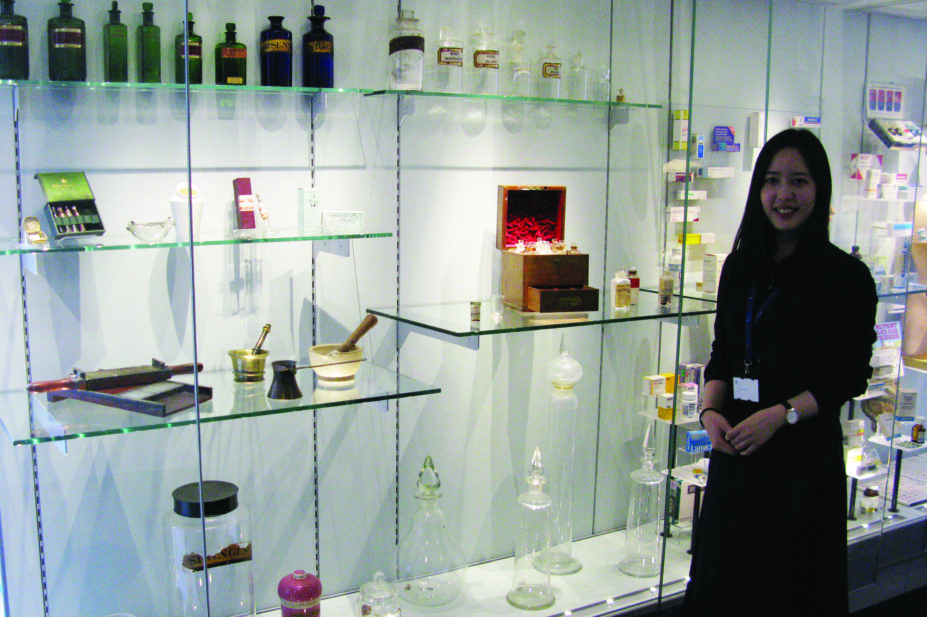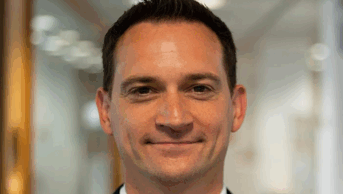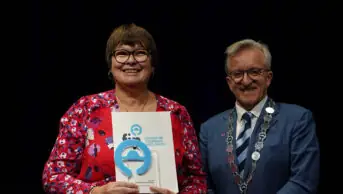
Courtesy of Ariel Lin
This summer I spent my placement at the Royal Pharmaceutical Society (RPS) Museum in London. The placement ran for eight weeks between July and September. I decided to complete a placement at the RPS museum for two reasons. The first, for the experience gained from collections management and curating, which align with my interests in museum studies. And second, the medical field is unfamiliar to me, so I wanted to explore this area at the RPS museum, which showcases the history of pharmacy in Britain by displaying pharmacy artefacts dating back to the 1500s.
I have curated only one art exhibition in the past. This was while completing my Master of Arts qualification, where the curatorial team consisted of multiple members designated to either project management, research and interpretation, artist liaison, finance, publication and marketing. Although we had numerous meetings to exchange ideas among different groups, I was involved in the marketing and promotion of the exhibition. At the RPS museum, I participated in collections management and curating. I was given the opportunity to catalogue and curate medical equipment recently donated from the pharmacy of Francis Staffiere from Brightlingsea, Essex, as part of a temporary exhibition. I was also able to use the museum’s database to catalogue each object. As a recorder, I have learned how to document a description for each item and use the database to track the item’s detail. The team also gave me access to the RPS library to research pharmaceutical ingredients and remedies written on dispensing labels. It was a great opportunity to learn more about the museum’s process of sorting, arranging and cataloguing items. Effective collections management is crucial when operating a museum as a lot of research and conservation is required. It supports and encompasses all functions of the museum.
The curating process involves the selection of objects, finalising a layout for display, writing the descriptions and installing the exhibit. Curating is using the collection to embody an idea. The curator plays the role of the storyteller and uses the pieces in a collection to illustrate the chapters in a story. Deciding on the layout of the exhibition was a new challenge for me because I had to figure out what I wanted to display and how to display it. I spoke with my supervisors and we arranged weekly catch-ups to discuss curating ideas and share their curatorial experiences with me.
The collection is being showcased at the RPS museum until Friday 2 February 2018. It is really exciting to have been given the opportunity to curate this exhibition of pharmacy antiquities, which provides an insight into historical pharmacy.
Throughout my placement, I have learned an incredible amount and worked closely with the museum team. The practical experience I have gained has affirmed everything I have studied during my MA course. The RPS museum team were a great source of support and invaluable advice, and helped me to successfully manage the process of curating a temporary exhibition. In the future, I would like to continue to work in museums and apply everything I have picked up during my time at the RPS.
Tzu-Fu Lin (Ariel) is an MA student in art museum and gallery studies at the University of Leicester. She completed her end-of-year work placement at the RPS museum in summer 2017 and is now a volunteer at the museum. She finished her bachelor’s degree and Master of Arts qualification in history and art history at the Fu Jen University and National Taiwan Normal University in Taiwan.


